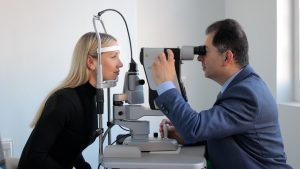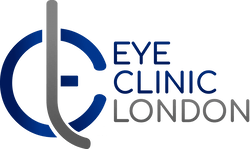How Long Does LASIK Surgery Last?

When people consider laser eye surgery, one of the most common questions they ask is:
“Will LASIK last forever?”
It’s a fair question. After all, LASIK can feel almost magical within minutes, it can correct years of blurry vision caused by short-sightedness, long-sightedness, or astigmatism. But while the effects are long-lasting, they aren’t always permanent.
In most cases, LASIK results remain stable for 10 to 20 years or more, and many people never need another procedure. However, natural ageing or prescription changes can occasionally affect vision later in life.
In this detailed guide, we’ll explain exactly how long LASIK surgery lasts, what factors influence its longevity, and what options you have if your vision changes years after the procedure.
A Quick Refresher: What LASIK Actually Does
LASIK (Laser-Assisted In Situ Keratomileusis) is a precise laser procedure that reshapes your cornea the clear front surface of your eye so that light focuses correctly on the retina.
By correcting the cornea’s shape, LASIK treats common refractive errors such as:
- Myopia (short-sightedness) – difficulty seeing far objects
- Hyperopia (long-sightedness) – difficulty focusing on near objects
- Astigmatism – blurred vision caused by an irregular corneal shape
Once the cornea is reshaped, it stays that way. The tissue doesn’t “grow back” or revert to its old form which is why LASIK results are often described as permanent.
However, what can change over time is your eye’s internal lens and overall focusing power, especially as you age.
So, How Long Does LASIK Really Last?

For the vast majority of patients, LASIK vision correction lasts decades.
Studies show that more than 95% of people maintain 20/25 vision or better even after 10 years, and many report no noticeable change in clarity for much longer.
That said, a small number of patients may experience minor vision changes over time due to:
- Natural eye ageing
- Hormonal changes
- New refractive shifts (e.g. mild short-sightedness returning)
These changes aren’t because LASIK “wore off” they happen because your eyes continue to evolve, just like the rest of your body.
Factors That Affect How Long LASIK Lasts
Several factors can influence how stable your results remain over time. Let’s look at them in more detail.
- Age at the Time of Surgery
Your age plays a big role in long-term outcomes.
- Ideal candidates are typically between 20 and 40 years old, when prescriptions are most stable.
- If you have LASIK before your eyes fully stabilise (in your early 20s or late teens), you may need an enhancement later as your vision naturally shifts.
- Those over 40 may experience presbyopia an age-related change that affects near vision, not LASIK itself.
So while LASIK permanently corrects your distance vision, it can’t stop age-related lens changes.
- Prescription Stability Before Surgery
Before undergoing LASIK, your optometrist checks that your prescription has been stable for at least 12–18 months.
If your vision was still changing before surgery, you’re more likely to notice slight changes afterwards. Stability before LASIK is key to long-term success.
- Lifestyle and Eye Health
Factors like screen time, UV exposure, smoking, and eye rubbing can all influence long-term eye health and comfort.
To maintain your LASIK results:
- Protect your eyes from UV rays with sunglasses.
- Take breaks from digital screens to prevent strain.
- Eat foods rich in omega-3 and antioxidants.
- Hormonal Changes
Pregnancy, menopause, or hormonal conditions can temporarily alter your vision. These changes can sometimes cause fluctuations, even after LASIK.
Your surgeon may recommend waiting until your hormones stabilise before surgery to maximise long-term results.
- Underlying Eye Conditions
Certain eye conditions such as keratoconus, glaucoma, or diabetes-related changes can affect corneal shape or clarity.
If you have any of these conditions, your specialist will determine whether LASIK or another approach (like Lasik surgery in London or LASEK/PRK) is the best long-term option for you.
The Role of Ageing: Why Vision Changes Over Time

Even with perfect LASIK results, natural eye ageing eventually affects everyone.
Here are the most common changes that can occur:
- Presbyopia (Age-Related Near-Vision Loss)
Typically starting in your 40s or 50s, presbyopia is when the lens inside your eye loses flexibility, making it harder to focus on close objects.
LASIK reshapes your cornea not your lens so it doesn’t prevent presbyopia.
Symptoms include:
- Needing reading glasses
- Difficulty focusing up close
- Eyestrain when using digital devices
Solutions:
- Reading glasses
- Monovision LASIK (one eye for distance, one for near)
- Refractive Lens Exchange (RLE)
- Cataract Development
As you age, the lens inside your eye can become cloudy, leading to cataracts.
Cataracts are unrelated to LASIK, but if they develop, they can blur your vision again. Cataract surgery can easily restore clarity and your prior LASIK doesn’t prevent it.
- Subtle Refractive Regression
A small number of people (about 1 in 10) may experience minor regression a slight return of nearsightedness or astigmatism within the first few years.
If this happens, your surgeon can perform a LASIK enhancement to fine-tune your vision.
LASIK Enhancements: When and Why You Might Need One
A LASIK enhancement (sometimes called a “touch-up”) is a minor follow-up procedure to correct small changes in vision that occur years after your original surgery.
Enhancements are typically:
- Quick – taking less than 5 minutes per eye.
- Safe – with very low complication rates.
- Effective – restoring vision close to original clarity.
Most patients never need one. But if your prescription drifts slightly over time, an enhancement can bring your eyesight back to near-perfect.
How Surgeons Decide if You Need an Enhancement
Your specialist will consider:
- The thickness of your cornea (enough tissue must remain to reshape safely).
- The degree of change in your prescription.
- The time since your original surgery.
If your cornea is too thin or irregular, an alternative treatment such as PRK or lens-based surgery might be recommended instead.
Typical Longevity Timeline
While results can vary from person to person, here’s a general idea of what you can expect after LASIK:
In the first six months, your vision is still settling. It’s completely normal to notice slight fluctuations as your eyes adjust and heal.
From around six months to five years, most people enjoy sharp, stable vision without needing any touch-ups or corrective lenses.
Between five and ten years, you might notice small changes in your vision. These are usually minor, but it’s a good idea to keep up with regular eye check-ups just to make sure everything stays on track.
Over the next ten to twenty years, your vision typically remains strong. However, natural ageing can start to affect your eyes during this time something LASIK can’t prevent.
After twenty years or more, you may need reading glasses or even cataract surgery, which is a normal part of getting older. The good news? Your LASIK results for distance vision usually hold up remarkably well.
How to Make LASIK Results Last Longer
There are steps you can take to help your results stay clear and consistent for decades.
- Protect Your Eyes Daily
Wear UV-blocking sunglasses outdoors to prevent damage from sunlight.
- Maintain Healthy Habits
Stay hydrated, eat nutrient-rich foods, and avoid smoking to keep your corneas healthy.
- Limit Eye Strain
Follow the 20-20-20 rule every 20 minutes, look at something 20 feet away for 20 seconds.
- Get Regular Eye Exams
Even after LASIK, schedule annual check-ups to monitor eye health and prescription stability.
- Address Dryness Early
If your eyes feel dry, use lubricating drops as recommended by your doctor.
Realistic Expectations
LASIK offers outstanding results but it doesn’t freeze time.
You can expect:
- Sharp, glasses-free vision for many years.
- Possible mild changes after 10–20 years.
- Natural ageing effects (like presbyopia) later in life.
It’s better to think of LASIK as a long-term correction, not a lifetime guarantee.
Still, studies consistently show that over 96% of LASIK patients remain satisfied with their results even 20 years later one of the highest satisfaction rates of any elective procedure.
What Happens if Vision Changes After LASIK?
If your vision changes years after surgery, there are several easy solutions:
- Enhancement LASIK – fine-tuning the cornea again.
- Prescription glasses for specific activities (like reading or driving).
- Lens-based procedures (e.g. RLE or cataract surgery) if the internal lens changes.
Your surgeon will assess which option offers the safest and most effective improvement for your situation.
Long-Term Safety of LASIK
LASIK has been performed for over 30 years and remains one of the safest and most researched surgical procedures worldwide.
Clinical studies show:
- Over 95% achieve 20/25 vision or better.
- Complications occur in less than 1% of cases.
- Results remain stable for decades with proper aftercare.
The cornea reshaping is permanent it won’t “wear off.” Changes only occur if other eye structures evolve naturally.
LASIK vs. Other Vision Correction Procedures
When it comes to improving your eyesight, you’ve got several options and each one offers different benefits depending on your needs, age, and eye health. Here’s how they generally compare:
LASIK is one of the most popular choices and typically lasts anywhere from 10 to 20 years or more. It’s ideal if you have common refractive errors like nearsightedness, farsightedness, or astigmatism. You’ll feel little to no discomfort during the procedure, and most people are back to their usual routine within a day or two.
If you’ve got thin corneas, your doctor may recommend LASEK or PRK instead. The results last just as long as LASIK, but you might feel a bit of mild discomfort for a few days while your eyes heal. Recovery usually takes around three to five days.
For those over 45 or dealing with presbyopia, Refractive Lens Exchange (RLE) can be a great option. It provides lifelong results since your natural lens is replaced with an artificial one. The procedure involves mild discomfort, and recovery generally takes about a week.
Another long-term solution is the Implantable Contact Lens (ICL) procedure. It’s often chosen by people with high prescriptions or who aren’t good candidates for LASIK. It offers lifetime results, can even be reversed, and there’s typically no pain during the process. Recovery is quick usually just two to three days.
If your main goal is long-term vision stability, both LASIK and RLE are excellent choices. The right one for you depends on your age, eye condition, and personal goals.
Common Myths About LASIK Longevity
Let’s clear up some popular misconceptions.
“LASIK wears off after 10 years.”
Not true. The cornea remains permanently reshaped. Only natural ageing or new eye conditions can change your vision later.
“You can only have LASIK once.”
Also false. Enhancements are safe and common if needed.
“LASIK prevents all future eye problems.”
While LASIK corrects refractive errors, it doesn’t prevent unrelated issues like cataracts or presbyopia.
Frequently Asked Questions:
- How long do LASIK results actually last?
Most people enjoy clear vision from LASIK for 10 to 20 years, and often much longer. The treatment permanently reshapes your cornea to correct refractive errors, so the improvement itself doesn’t wear off. However, your eyes can still change naturally with age, especially after your 40s, when conditions like presbyopia can make reading glasses necessary. Even so, the distance vision correction from LASIK usually remains strong for decades. - Is LASIK painful?
You’ll be relieved to know that LASIK isn’t painful. Before the procedure begins, your surgeon applies numbing eye drops, so you don’t feel anything sharp or uncomfortable. You might notice a slight pressure or mild stinging sensation for a few seconds, but that’s about it. After surgery, your eyes may feel dry or gritty for a few hours, similar to having a bit of sand in them, but this feeling fades quickly as your eyes heal. - How soon will I see clearly after LASIK?
Your vision usually improves almost immediately after the procedure. Many people notice a dramatic difference within just a few hours, and by the next day, they can see clearly enough to return to normal activities. Your eyes will keep adjusting over the next few weeks as they stabilise, and by the one-month mark, most patients reach their full visual clarity. - Is LASIK safe?
Yes, LASIK is considered very safe when performed by an experienced surgeon. The technology used today is highly advanced, allowing for precise, personalised treatment. Complications are extremely rare, and most issues like mild dryness or temporary glare are minor and short-lived. As long as you follow your surgeon’s pre- and post-care instructions, the risk of serious problems is minimal. - Can anyone get LASIK?
Not everyone is an ideal candidate. You can usually get LASIK if you’re over 18, have stable vision for at least a year, and your prescription falls within the treatable range. However, certain conditions like very thin corneas, severe dry eyes, or specific eye diseases may make LASIK unsuitable. During your consultation, your doctor will perform detailed tests to determine if it’s the right option for you or if another procedure, such as PRK or ICL, would be safer. - How long does the LASIK procedure take?
The surgery itself is surprisingly quick often just 10 to 15 minutes for both eyes. Most of that time goes into preparation and ensuring everything is perfectly aligned. The actual laser treatment lasts only seconds per eye. Once it’s over, you’ll rest briefly before heading home, where you’ll need to relax and keep your eyes closed for a few hours. - What’s recovery like after LASIK?
Recovery is usually smooth and fast. You’ll likely notice clearer vision the same day, though it can take a few days for your eyes to feel completely normal. You’ll use prescribed eye drops to prevent dryness and infection, and you’ll need to avoid rubbing your eyes or applying makeup for at least a week. Most people return to work and daily activities within one or two days, but it’s best to avoid swimming, contact sports, and dusty environments until your doctor gives the green light. - Can my vision change again after LASIK?
Your cornea will stay permanently reshaped, but your eyes can still change due to age or hormonal factors. That means even after successful LASIK, you could eventually need glasses for reading or close-up tasks, especially after 40. In some cases, if your prescription shifts slightly, a simple enhancement procedure can fine-tune your vision again. - Are there any risks or side effects I should know about?
Like any surgical procedure, LASIK carries some risks, though they’re rare. The most common side effects are temporary things like dry eyes, glare, halos around lights, or slight visual fluctuations in the first few weeks. These usually improve as your eyes heal. Serious complications, such as infection or vision loss, are extremely uncommon when the procedure is performed by a qualified surgeon and proper aftercare is followed. - How do I know if LASIK is right for me?
The best way to find out is through a detailed consultation with a LASIK specialist. They’ll assess your eye health, corneal thickness, prescription stability, and lifestyle needs. If your eyes meet the criteria, LASIK can be a life-changing option that frees you from glasses and contact lenses. If not, there are plenty of other advanced vision correction procedures like PRK, RLE, or ICL that might suit you even better. Your doctor will help you decide what’s safest and most effective for your specific situation.
Final Thoughts: Clear Vision That Lasts a Lifetime
LASIK offers long-term freedom from glasses or contact lenses, giving you the clarity and convenience you’ve always wanted. While no vision correction procedure can stop the natural ageing process, the results from LASIK often last for decades and with good eye care, you can keep your vision sharp well into the future.
If you ever notice subtle changes over time, simple enhancement treatments can help fine-tune your eyesight again. The key is to stay consistent with your eye check-ups and follow your specialist’s advice. If you’re considering Lasik surgery in London, you can contact us at Eye Clinic London. Our team is here to guide you through every step, ensuring your vision stays as clear and confident as possible.
References:
- Castro-Luna, G., Jiménez-Rodríguez, D., Pérez-Rueda, A. & Alaskar-Alani, H., 2020. Long term follow-up safety and effectiveness of myopia refractive surgery. Open Ophthalmology Journal, 14, pp. 363-371. https://pmc.ncbi.nlm.nih.gov/articles/PMC7727822/
- Alió, J.L., Mulet, M., Sprecher, A. & Piñero, D.P., 2016. Twelve-year follow-up of laser in situ keratomileusis for moderate-to-high myopia and myopic astigmatism. Journal of Refractive Surgery, 32(9), pp. 582-587. https://pmc.ncbi.nlm.nih.gov/articles/PMC5449750/
- L Kowal et al., 2005. Five-year follow-up of LASIK for hyperopia. Ophthalmology, 112(10), pp. 1840–1848. PMID: 15691550. https://pubmed.ncbi.nlm.nih.gov/15691550/
- G Castro-Luna, D Jiménez-Rodríguez, A Pérez-Rueda & H Alaskar-Alani, 2020. Long Term Follow-Up Safety and Effectiveness of Myopia Refractive Surgery. Open Ophthalmology Journal, 14, pp. 363-371. PMID: 33255392. https://pubmed.ncbi.nlm.nih.gov/33255392/
- Polk, E., 2023. Does LASIK Last Forever? Understanding the Longevity of LASIK Results. Washington University Ophthalmology Blog. Available at: [online] (Accessed: 21 October 2025). https://ophthalmology.wustl.edu/does-lasik-last-forever-understanding-the-longevity-of-lasik-results/

